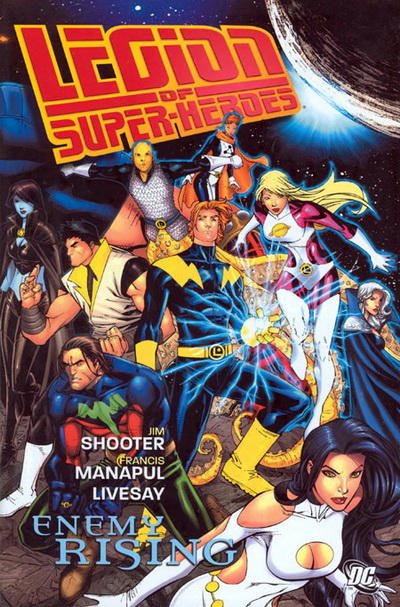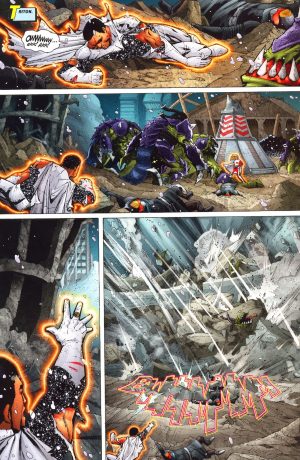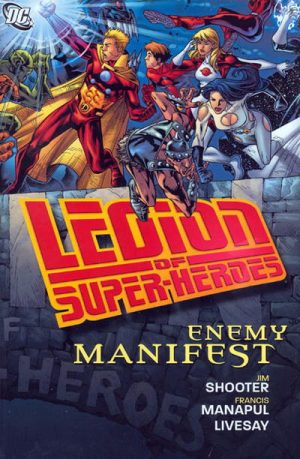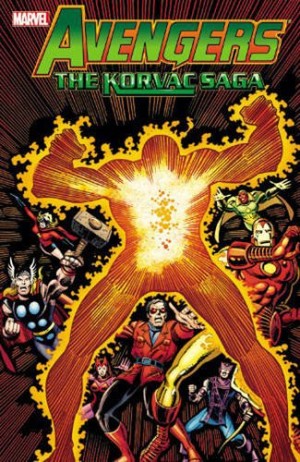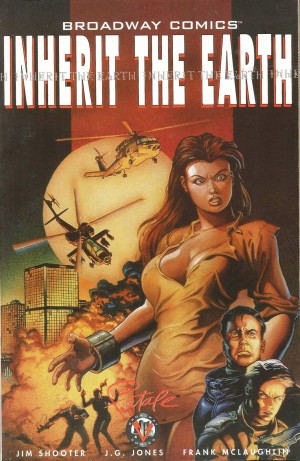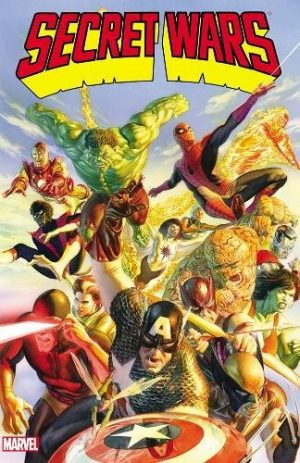Review by Karl Verhoven
It may seem like you’re coming into Enemy Rising in the middle of a story, but that’s not the case. The Legion of Super-Heroes has always maintained a large cast, and we see assorted members on missions, or in leader Lightning Lad’s case, troubled by administrative duties taking their toll on his capabilities.
Staunch Legion fans might approach Enemy Rising with some trepidation as it features the return of writer Jim Shooter to the characters he revitalised as a teenage prodigy in the 1960s. Can he come home again? The answer is a qualified yes. His experience shows as he rapidly establishes the large cast, what they can do, their personalities, and how they’re perceived, while also putting them in threatening situations and introducing new alien races. The compact storytelling is admirable, and serves to introduce intriguing situations, such as the United Planets stripping all recognition of Princess Projectra on the basis of her home planet being destroyed. “Ignorant peasants” indeed.
Francis Manapul was an obvious talent when he drew Legion of Super-Heroes, and the enthusiasm is also apparent, but in 2009 he’s not quite learned the basics of storytelling. It’s sometimes hard to figure out what’s happening, especially the case for readers not already familiar with the team, at least not without referencing earlier pages. Manapul really puts the effort in, but his designs are overly complicated. However, that’s all placed in perspective by Sanford Greene drawing the final chapter and being an artist not ready for professional work. His people are distorted, his layouts unimaginative and his sense of perspective deficient.
Central to Shooter’s two volume run is that the Legion can’t be mavericks, they must work within an administrative structure, which could be seen as echoing his views as Marvel’s editor in chief. It means compromising their independence, acting within budgets and accepting the political will of the United Planets. Alongside that, there are vested interests stifling their effectiveness, assorted well raised ethical concerns, and their protecting people and saving lives is weighed against the damage caused. The primary threat comes from extremely savage aliens capable of destruction and slaughter on a planetary scale. That’s all good, but in attempting to register the Legionnaires as young adults the dialogue sometimes doesn’t sound credible, especially when Shooter goes for banter. He’s also puzzlingly weak with chapter ending cliffhangers.
Enemy Rising eventually has the Legion beset on all sides to the point of being rendered utterly ineffective via an escalating series of events. The partial solution is a little too glib, but it leaves the Legion a viable institution heading into Enemy Manifest.
